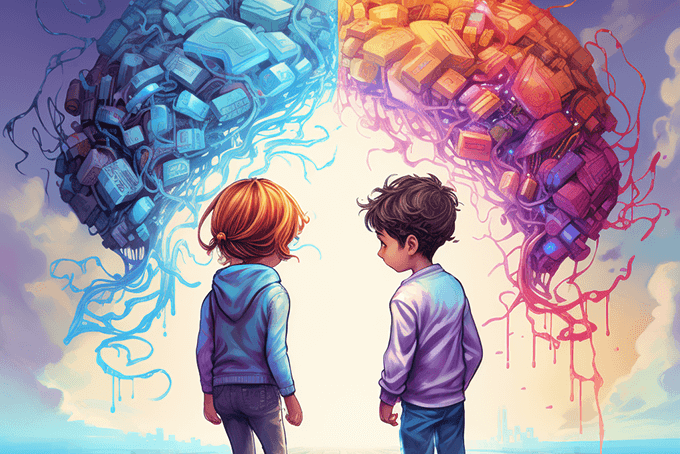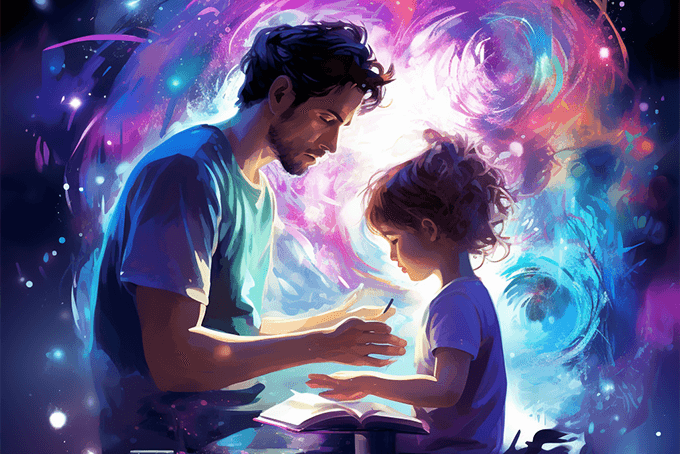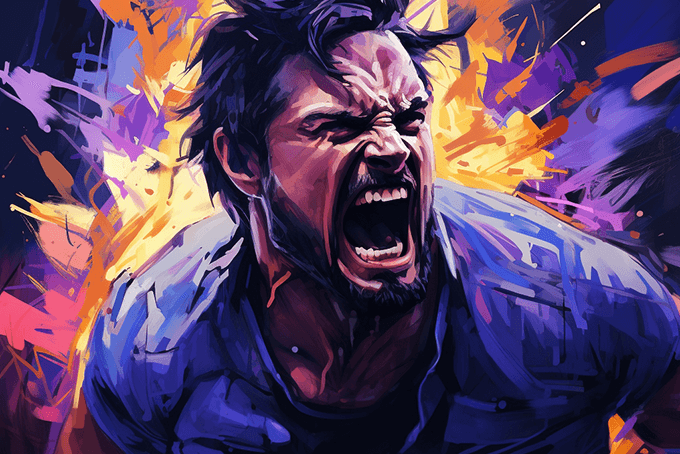Most young children are excited about doing a creative activity, while others rush through a project or are quick to complain, “I can’t draw.” The child that doodles while listening to directions instead of attentively keeping eye contact frustrates many a teacher. Some adults might struggle to understand their child’s quirky obsession with wearing matching clothing at all times. This actually has more to do with the brain than one might think. A young child’s brain is simply letting its dominant side take over, and not blending with the other in order to reach its full potential.
The Brain and Creativity
The brain is divided into two hemispheres – the right and left. The right side of the brain controls the left side of the body, with the left side dominant over the right. The right side of the brain is in charge of creative, social, visual skills and intuition. The left sides takes over with sequencing, language, math, and rational thoughts. Deep within the brain lies the visual cortex, which is stimulated through viewing and creating visual arts. Semir Zeki writes that, “visual arts contributes to our understanding of the visual brain because it explores and reveals the brain’s perceptual capabilities.”
With most kids more comfortable using their right hand, they begin their journey as left- brain dominant not tapping into their right-brain potential. Celeste Carneiro finds that if we spent more time stimulating the right side of the brain we would “search out the integration of the two hemispheres, balancing the use of our potentials.” This is something that many adults forget, as they are left-brain dominant themselves, potentially causing a lack of creative stimulation for budding children.
Right Brain or Left Brain
To understand which side of the brain is dominant in a child, adults can observe how the child responds to various situations. Diane Connell, Ed.D, finds children who prefer to work alone, and find researching and analyzing facts interesting are left-brain dominant. Children who are right-brain dominant enjoy art projects and hands on activities over writing papers and doing research.
Along with the right side of the brain having a significant role in creativity, the Neuro Psychiatry Reviews finds the “frontal lobe to be the part of the cortex that is most important for creativity, being critical for divergent thinking,” and that the ways family and friends encourage the development of the frontal lobe encourages independent and divergent thinking. Divergent thinking stimulates kids to look at things differently, use creative thought processes for decision-making, and motivates them to ask lots and lots of questions.
Encouraging the Whole Brain and Creativity
So, how to encourage right-brain thinking in children? Betty Edwards, an art teacher known for her book Drawing on the Right Side of the Brain, developed ways to encourage others to tap into their hidden creativity and stop the “I can’t draw” stigma. Through various exercises, Edward’s desire was to help others train their brains to draw in different ways.
Encouraging kids brains to be more right-brain dependent can be as easy as doing some creative activities that don’t overwhelm or frustrate left-brain learners. Right-brain dominant kids might also need some assistance in getting excited about researching that essay or finding ways to organize their room. Just as Carneiro stated, finding ways to encourage the use of both sides of the brain creates a complete human, resulting in harmony and the use of its full potential. It is not a question of either/or – right brain or left brain.
Activities for Kids
Right- brain (ages 7 to 10)
- Find a picture in a magazine the child finds interesting. Use a ruler to section off a 3 by 3-inch part of the image and then cut away the rest.
- Encourage the child’s right-brain to take over and make creative decisions through recreating the small section of the picture. When children are not sure of what they are drawing Carneiro finds the left-brain is tricked into thinking the activity is not worth its time, and allows the right brain to take charge.
- Instead of using a pencil to sketch out the drawing first, offer the child oil pastels for drawing along with a 9 by 9-inch piece of drawing paper. Play music while he is working and offer him support in creating his artwork as needed.
Left- brain (ages 4 to 7)
- Use various colors of construction paper to create a cut paper pattern collage, which boosts fine-motor skills and and hand-eye coordination.
- Before beginning a creative project, Connell finds that spending time discussing the activity helps the child think about the big picture. Talk about what a pattern is with the child and how they can be quite simple or challenging to create. Having him work quietly also boosts his left-brain thinking.
- Offer the child scissors, rulers, pencils and erasers to use while creating his pattern collage appealing to his left-brain’s desire for order and linear creation.
Joining the two (ages 4 to 10)
- Provide the child with finger paint paper along with a variety of colors of finger paint. Play music while he explores the finger paint encouraging him to make lines and shapes along to the music.
- Once the finger paint is dry, the child can use a black marker to create a drawing over the finger paint. Encourage him to find shapes and lines to connect together in creating a realistic finished drawing. Allow the child to work in silence while he’s finishing his drawing.
- After the child has completed his artwork, discuss the finished piece giving his frontal lobe and visual cortex a boost.
No matter the age of the child, spend time looking at, discussing, and creating art. This will stimulate his frontal lobe, visual cortex, and help train his right and left-brain to work together.



